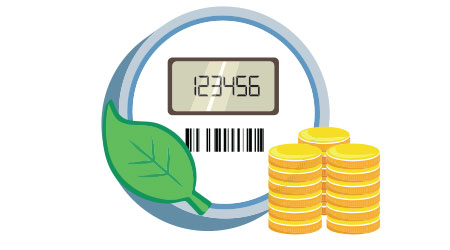For many facility managers, attention to electric metering stops at the utility bill: Meters show how much electricity was used, on which the bill is based. Smart facility managers, however, are finding ways to use metering technology and tariffs to secure low (or no) cost opportunities to cut their bills, save on maintenance, and reduce their environmental impacts, according to an article from Building Operating Management on the FacilitiesNet website.
Many facility managers use data from utility-owned meters to:
• Verify or challenge high utility charges, e.g., after the utility changes a meter
• Track and benchmark facility usage.
• Verify savings claims under energy efficiency performance contracts.
• Help calculate their carbon footprints.
• Create electric sub-bills for tenants, buildings, or divisions where utility meters for each already exist.
But additional opportunities exist, using both utility meters and customer-owned equipment, the cost of which is dropping due to technological advances, wireless and web-based communications, and standardization of data access protocols.
Where a facility has multiple utility-owned meters, reading them more frequently is a handy way to see how loads vary across shorter time periods (e.g., day versus night, weekends versus weekdays). Doing so may determine which major loads (or portions of a facility) are “wagging the dog” by having an outsized impact on the overall utility bill.

 Contaminants Under Foot: A Closer Look at Patient Room Floors
Contaminants Under Foot: A Closer Look at Patient Room Floors Power Outages Largely Driven by Extreme Weather Events
Power Outages Largely Driven by Extreme Weather Events Nemours Children's Health Opens New Moseley Foundation Institute Hospital
Nemours Children's Health Opens New Moseley Foundation Institute Hospital Code Compliance Isn't Enough for Healthcare Resilience
Code Compliance Isn't Enough for Healthcare Resilience Ribbon Cutting Marks First Phase Completion for New Montefiore Einstein Facility
Ribbon Cutting Marks First Phase Completion for New Montefiore Einstein Facility